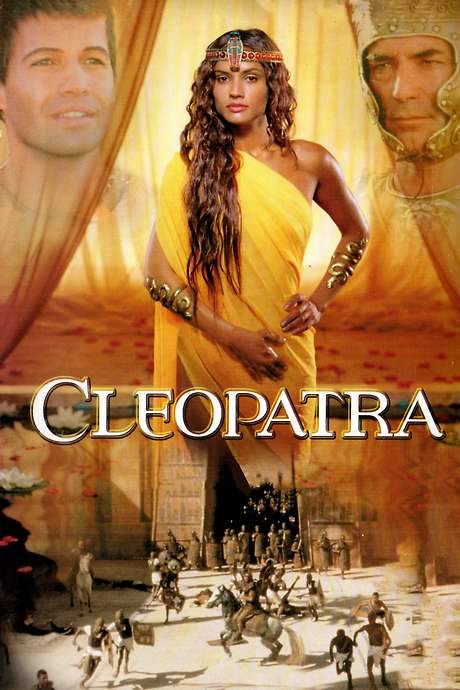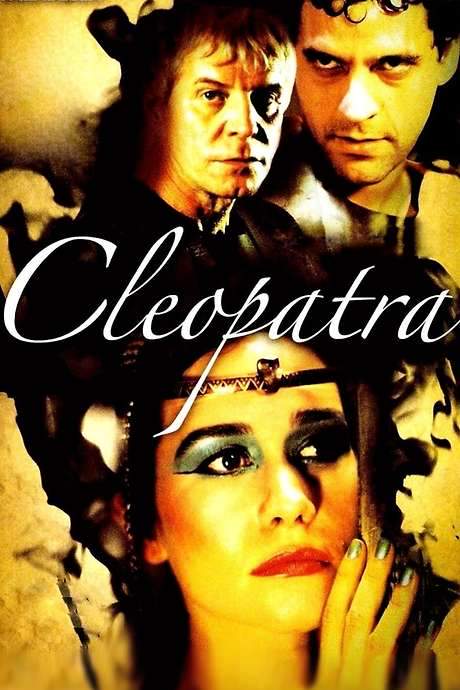Warning: spoilers below!
Haven’t seen Serpent of the Nile yet? This summary contains major spoilers. Bookmark the page, watch the movie, and come back for the full breakdown. If you're ready, scroll on and relive the story!
Serpent of the Nile (1953) – Full Plot Summary & Ending Explained
Read the complete plot breakdown of Serpent of the Nile (1953), including all key story events, major twists, and the ending explained in detail. Discover what really happened—and what it all means.
The film opens in 44 BC, just after Julius Caesar’s assassination, and traces Rhonda Fleming as Cleopatra and Raymond Burr as Mark Antony from that moment to their mutual suicides in 30 BC. The world they inhabit is one of opulent feasts and lavish pageantry, yet the vast population of Egypt remains hungry and vulnerable. Cleopatra’s ambition is laid bare: she seeks to bind Antony to her desire to become queen of Rome and to install Caesar’s son as the eventual ruler of the empire, turning political power into personal triumph. In the shadows of this grandeur, the uneasy balance of Rome’s new order—its ruling triumvirate—begins to tilt under Cleopatra’s calculated pull, and the drama unfolds against a backdrop of desert sun, glittering halls, and the ever-present weight of empire on the horizon.
Caesar’s companion William Lundigan as Lucilius enters the scene with the memory of Caesar’s romance with Cleopatra in his thoughts. He becomes a wary observer of Cleopatra’s alluring tactics, recognizing how she uses luxury, spectacle, and charm to bend strong wills toward her own ends. Cleopatra, however, is not easily cornered by loyalty or sentiment. She attempts to sway Lucilius directly, but his skepticism about her manipulations grows deeper as he witnesses the widening rift between Rome and Egypt. The tension intensifies when Cleopatra points to her younger half-sister Arsinoe as the source of discontent, a move that sets off a chain of maneuvers designed to keep Antony’s allegiance in her grasp. In a striking test of loyalty, Lucilius is sent on a perilous expedition against Arsinoe, a mission that Cleopatra’s officers carry out with ruthless efficiency. He returns gravely wounded, a symbol of Cleopatra’s leverage and the price of dissent, now confined to his apartments as an honored prisoner while Antony’s judgment remains clouded by feasting, indulgence, and the intimate proximity to Cleopatra.
As the political weather worsens, Antony—still a key figure in Rome’s power-sharing arrangement—begins to sense that his duty to Rome is slipping away under Cleopatra’s seductive influence. He recognizes, perhaps only dimly, that Cleopatra is advancing her own agenda under the guise of romance and alliance. The film makes it clear that this Cleopatra is not merely driven by passion; she wields passion as a tool to advance a political strategy. Antony’s dilemma becomes a moral strain: should he lead an Egyptian army against his homeland, or stay by Cleopatra’s side in a palace that glitters with luxury while Rome faces the threat of disintegration? Lucilius, now free from his duties in Egypt, is tasked with returning to Rome to warn Octavius Michael Fox of the unfolding crisis, a mission that carries the weight of empire on its shoulders.
The arrival of Octavius marks a decisive shift. Roman armies descend on Egypt as Octavius consolidates power and positions himself as the moral and military counterweight to Cleopatra’s ambitions. Antony, torn between his loyalty to Rome and his affection (or perhaps more accurately, his political usefulness) to Cleopatra, chooses to linger within the gilded corridors of Cleopatra’s palace rather than lead an Egyptian army against his homeland. The siege tightens, the stakes rise, and the sense of an irreversible collision between two great civilizations dominates the narrative. In a climactic turn, Antony pierces his own resolve as he takes his own life, a choice that forces Lucilius to charge through palace gates to bring the dying man to Cleopatra’s chamber.
In the final, fateful moments, Cleopatra’s carefully laid plans crumble in the face of overwhelming odds. As the last strands of her dream dissolve, she meets her end not with a burst of passion but with the cold precision of a snake, sealing her fate as a ruler whose ambitions outpaced her ability to sustain them. The film closes on a note of somber reflection, a meditation on power, loyalty, and the costs of ambition. Cleopatra’s grandeur fades with the hiss of the asp, and the audience is left to ponder the price of imperial dreams and the fragile line between charisma and calculation. The performances—anchored by Rhonda Fleming in the title role and Raymond Burr as Antony—offer a meditation on how love, politics, and legacy intertwine in the shadows of history, where every victory is tempered by sacrifice and every act of grandeur carries an unseen consequence.
The Gilded Girl is a striking presence in Cleopatra’s court, brought to life by Julie Newmar, whose portrayal adds a gleaming, enigmatic layer to the palace’s glow and underscores the film’s theme that appearances can obfuscate deeper motives. The result is a sweeping, evocative drama that balances historical imagination with a measured, character-driven arc, inviting viewers to consider how power can seduce even the most steadfast loyalties and how empires rise and fall on the strength of a single, decisive choice.
Last Updated: October 09, 2025 at 09:23
Unlock the Full Story of Serpent of the Nile
Don't stop at just watching — explore Serpent of the Nile in full detail. From the complete plot summary and scene-by-scene timeline to character breakdowns, thematic analysis, and a deep dive into the ending — every page helps you truly understand what Serpent of the Nile is all about. Plus, discover what's next after the movie.
Serpent of the Nile Timeline
Track the full timeline of Serpent of the Nile with every major event arranged chronologically. Perfect for decoding non-linear storytelling, flashbacks, or parallel narratives with a clear scene-by-scene breakdown.

Similar Movies to Serpent of the Nile
Discover movies like Serpent of the Nile that share similar genres, themes, and storytelling elements. Whether you’re drawn to the atmosphere, character arcs, or plot structure, these curated recommendations will help you explore more films you’ll love.
Explore More About Movie Serpent of the Nile
Serpent of the Nile (1953) Scene-by-Scene Movie Timeline
Serpent of the Nile (1953) Movie Characters, Themes & Settings
Serpent of the Nile (1953) Spoiler-Free Summary & Key Flow
Movies Like Serpent of the Nile – Similar Titles You’ll Enjoy
Legions of the Nile (1959) Story Summary & Characters
Cleopatra (1934) Plot Summary & Ending Explained
A Queen for Caesar (1962) Full Summary & Key Details
Cleopatra (1000) Complete Plot Breakdown
Cleopatra (1912) Story Summary & Characters
Cleopatra (1963) Full Movie Breakdown
Cleopatra (2007) Film Overview & Timeline
Cleopatra (1917) Plot Summary & Ending Explained
The Notorious Cleopatra (1970) Full Summary & Key Details
Cleopatra’s Daughter (1960) Movie Recap & Themes
Antony & Cleopatra (1981) Ending Explained & Film Insights
The Serpent of Death (1990) Movie Recap & Themes
Caesar and Cleopatra (1945) Story Summary & Characters
The Erotic Dreams of Cleopatra (1985) Ending Explained & Film Insights
The Egyptian (1954) Complete Plot Breakdown


















